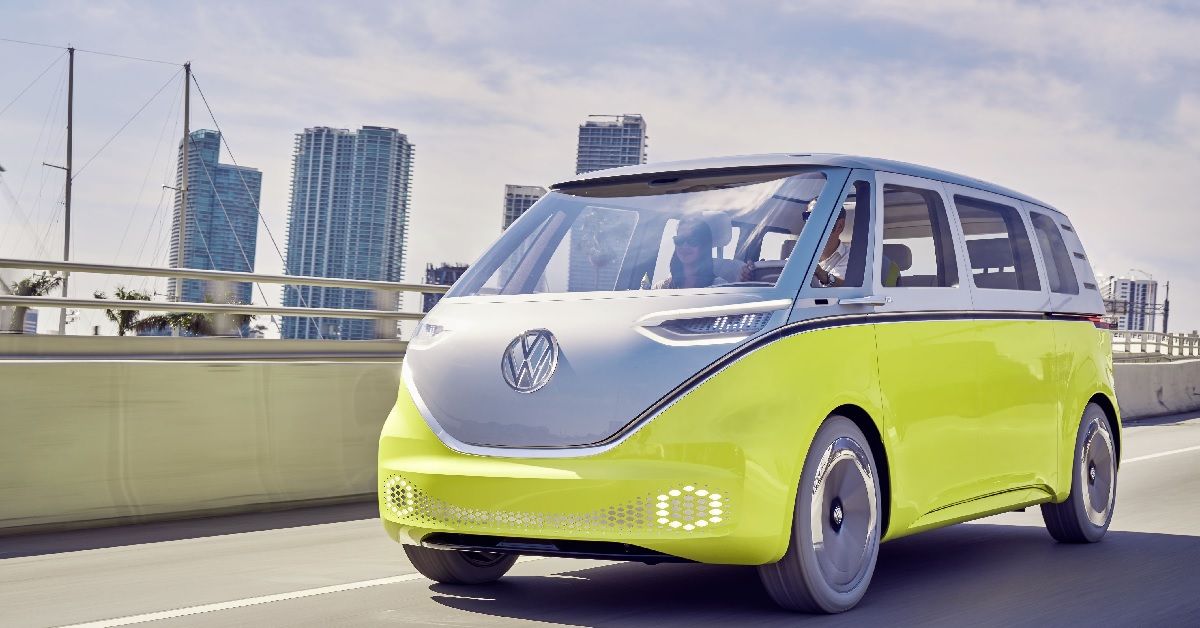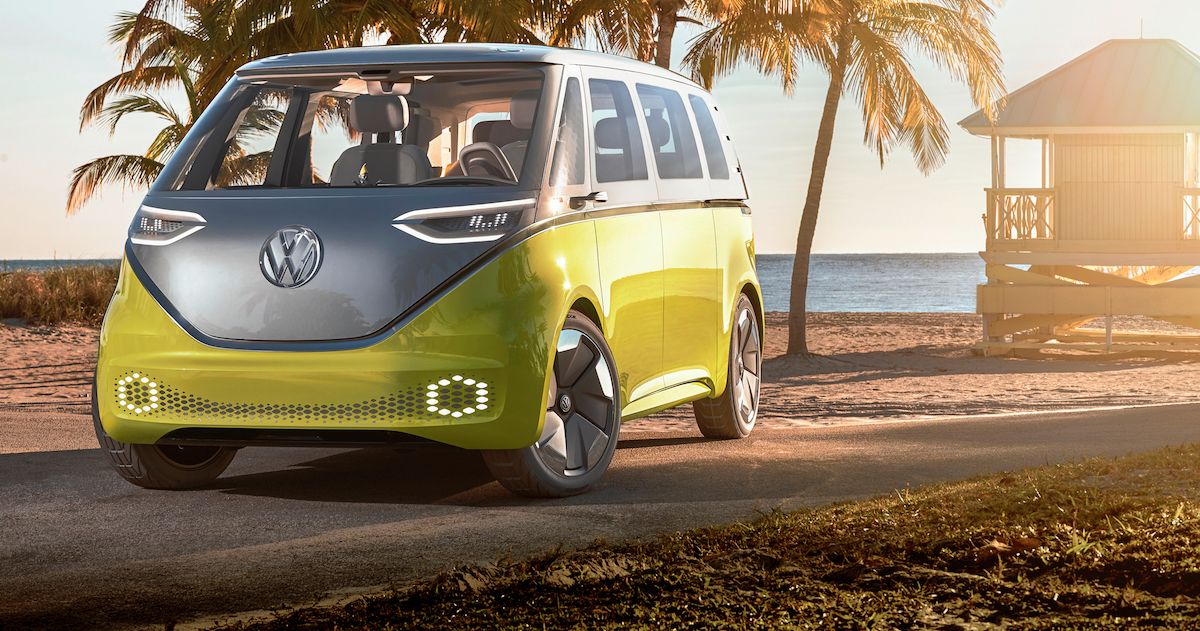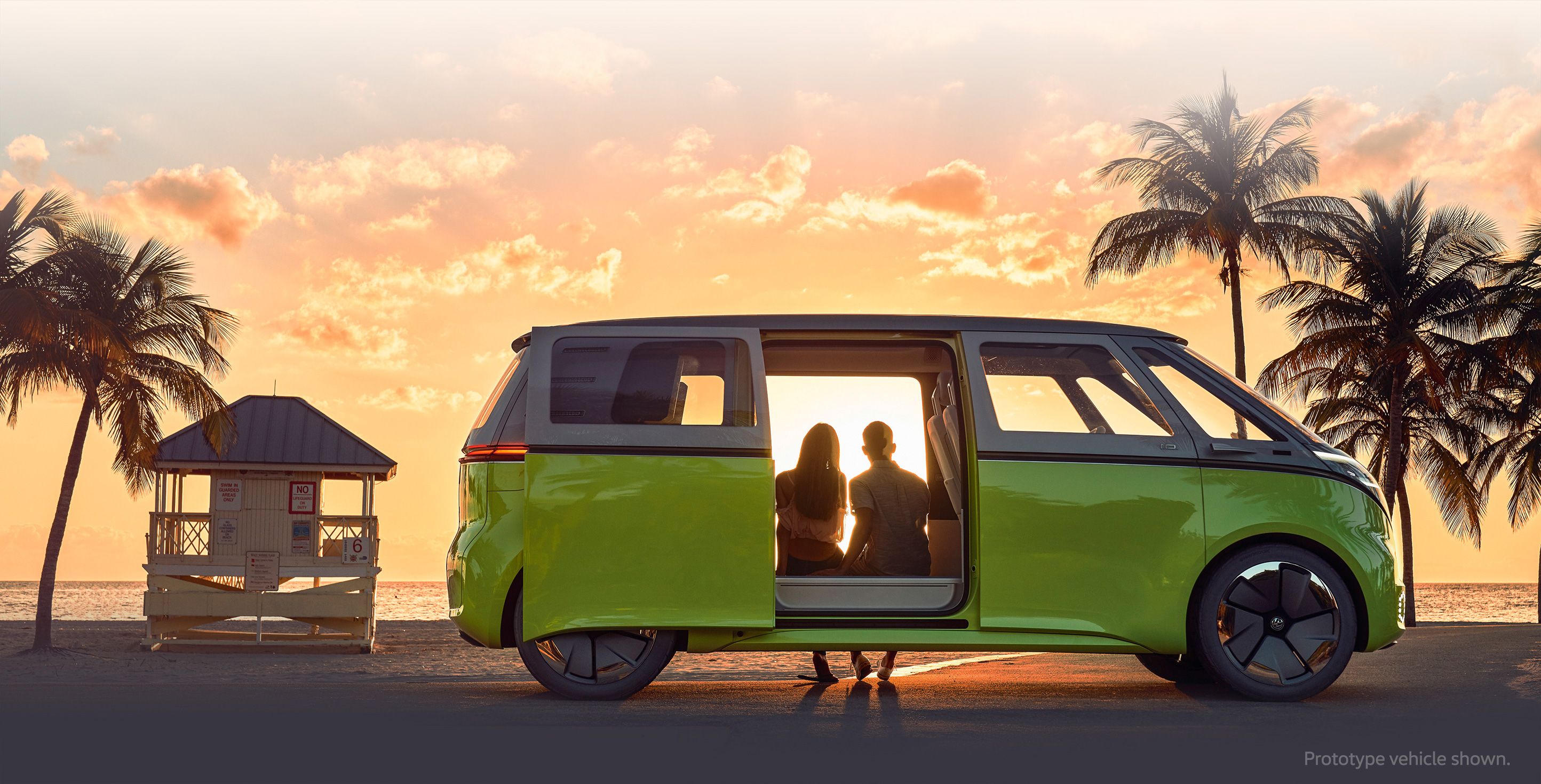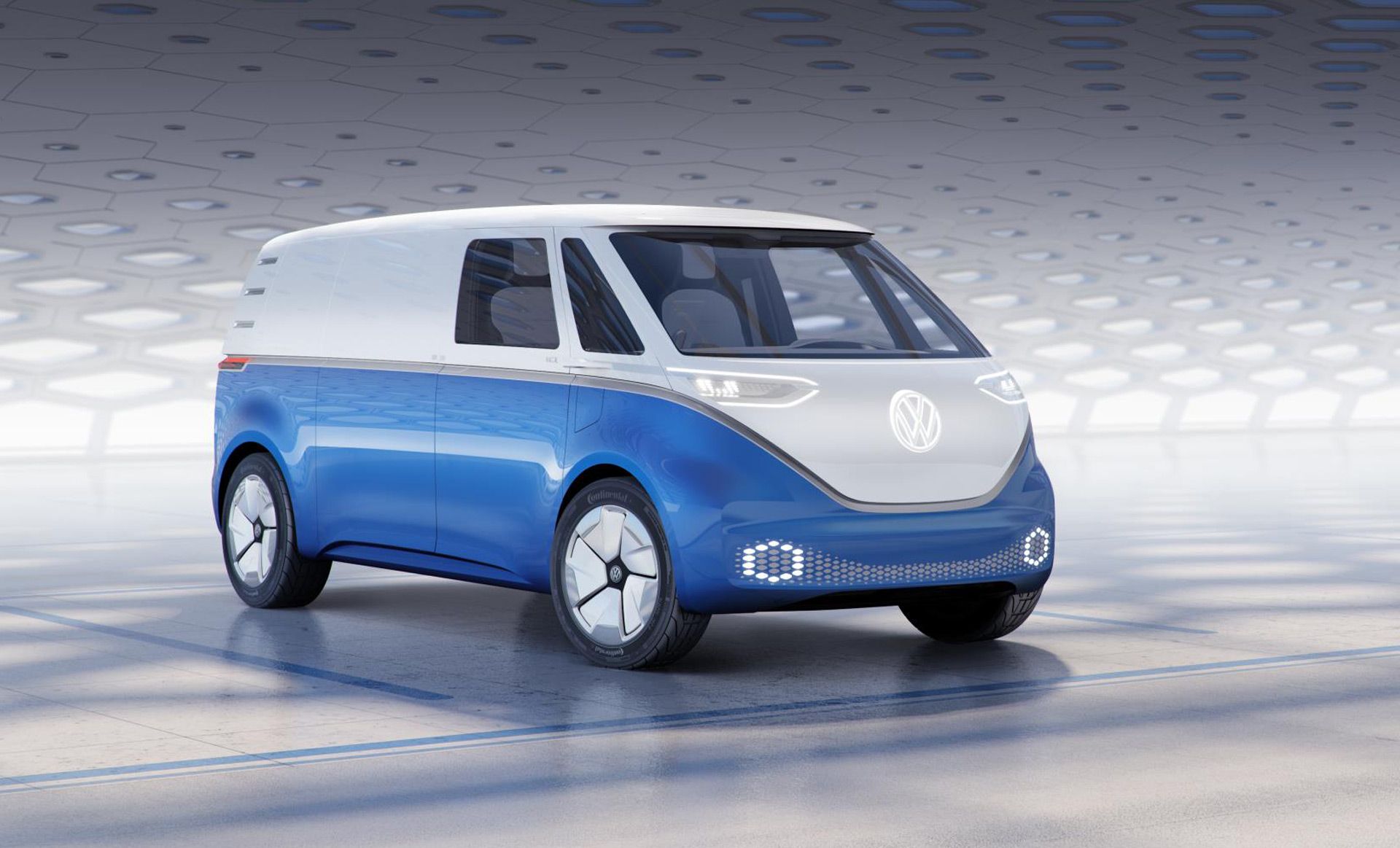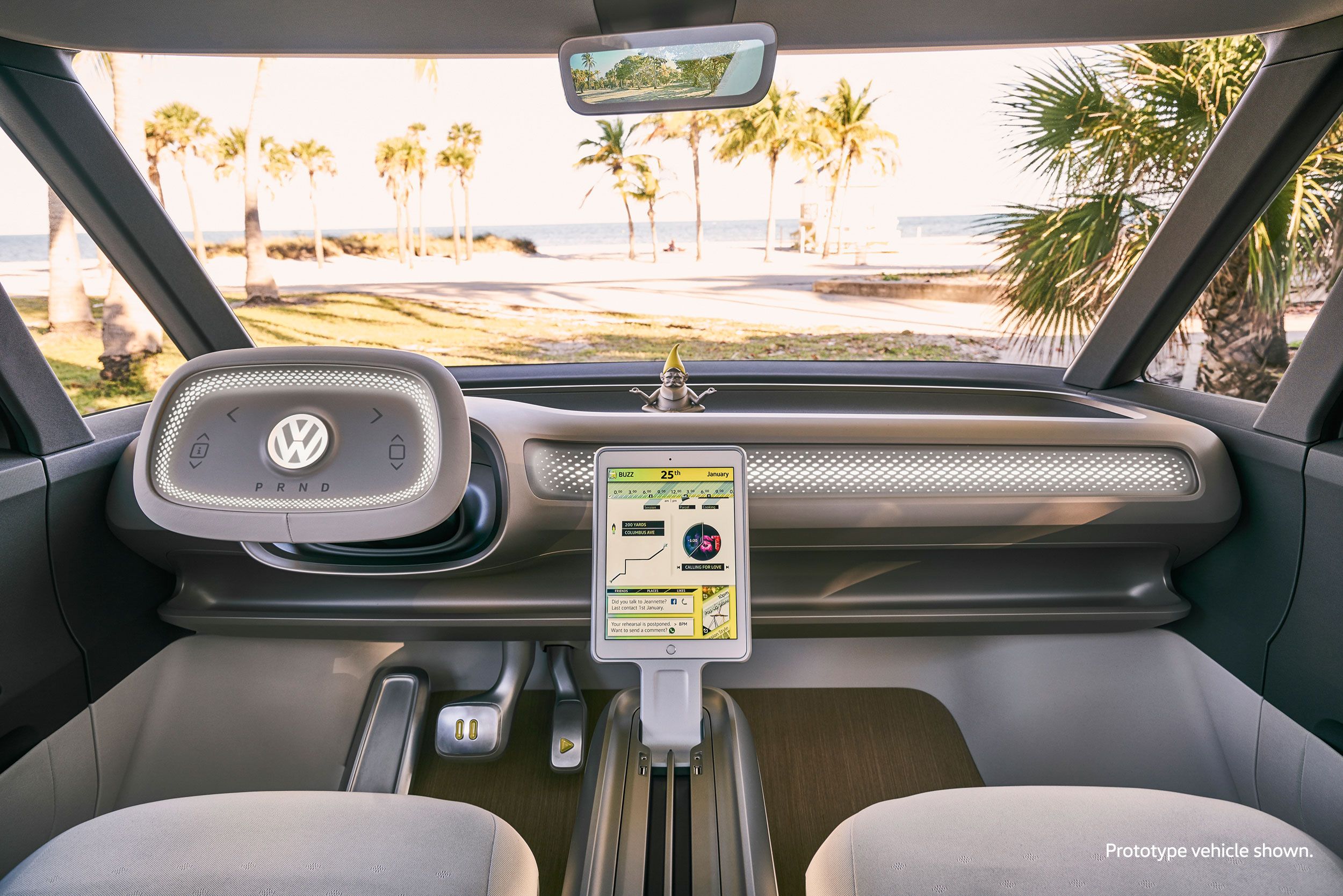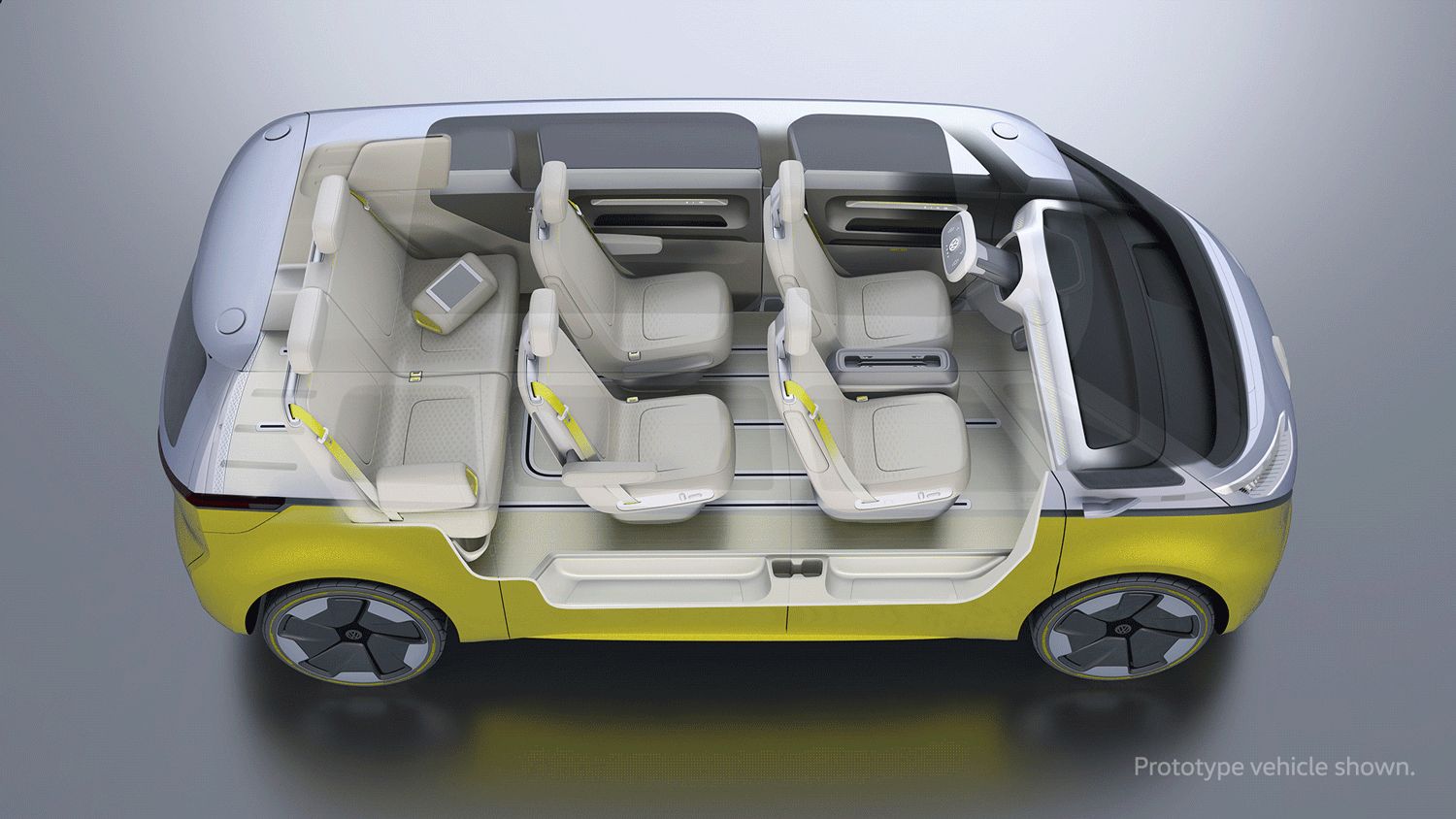The Volkswagen Microbus of the 50s and 60s is a staple of the hippie movement, and the perfect vehicle for long trips across the country. Packed with nothing more than a guitar, a dog, and some clothes, the bus made a name for itself in its time for being the vehicle of choice for any peace loving kids.
But it's been a long time since the 60s. As the future gets closer and closer, automakers are scrambling to get EVs off the production line. Volkswagen, even with their dodgy emissions history, is hopping on the bandwagon as well with their own nostalgic spin on the electric vehicle.
While it's still going to be a couple of years before it gets to the states, let's talk about everything we know about the upcoming 2022 Electric Volkswagen Bus.
What Is It
While it's better known as an Electric VW Bus, the concept vehicle is actually known as the ID. Buzz, and is one of the newer vehicles in Volkswagen's electric arsenal. It's one of the different vehicles announced on the ID. lineup, which includes a hyper-car and a dune buggy, but is one of the only ones confirmed to sell in the states.
To some, it may feel like Volkswagen is changing course at the drop of a hat, making claims about having 20 to 30 electric vehicles available by 2025. Part of the reason VW is so keen on electrifying their vehicles is because of the California Partial Consent Act, which mandates that VW, and its German counterparts like Audi and Porsche, have at least three new electric vehicles for sale through 2025.
Power, Range, And Trims
As far as we know, there are two different trims, The ID. Buzz being the base model passenger vehicle. There's also going to be a cargo version (aptly named the I.D. Buzz Cargo) with a slightly different layout.
The electric motor in the base model Buzz Cargo will be at the rear, in classic Volkswagen fashion, and is said to generate 201 horsepower. For the utilitarian driver that wants an AWD version, a second electric motor can be optioned in and installed at the front.
The passenger version uses that same two-motor layout as standard, which put together creates an impressive 369 horsepower. To put it in perspective, that's well over 100 more than the cheapest Tesla.
Because the base Buzz Cargo has a smaller engine to start, it has a smaller 48kw battery that'll last the car about 200 miles per charge. But you can upgrade that to the 110kw battery that comes standard in the passenger version, which will take you 340 miles before needing a charge.
Interior And Technology
Keep in mind, all we've seen is the concept. There's a chance all the impressive technology will go the way of the dodo, in typical concept car fashion. But for now, we'll start in the front and work our way back.
The first thing to notice is the steering wheel, with the large VW badge front and center. As of right now, the steering wheel is retractable, which serves as an excellent anti-theft device, and a great way to keep the steering wheel out of the way while the car drives itself.
Moving onto the infotainment center, which is currently just an iPad on a stick. While that isn't particularly bad, more and more cars are coming with Apple and Android compatibility.
When it comes to seats, you get plenty of them. Two seats per row to be exact, which makes sense since it's following in the footsteps of the microbus. The real crème de la crème, however, is how every seat (front and rear) is on sliders and can be fully adjusted, removed, and even spun around. It'd be an excellent feature if it makes it past the conceptual stage of development.
The main difference with the cargo is, as you'd expect, the seat count. Though the seat layout is an incredibly unique bench seating design for three passengers. The driver's seat is normal, and a two-person bench seat is placed where a regular passenger seat would be. But after taking out the last two rows of seating, it's estimated that the Buzz Cargo can carry 1,764 lbs of stuff in the back.
One of the exclusive features of the Buzz Cargo is a solar charging system. Since work vans spend a lot of their time outside, Volkswagen implemented a way to charge the car while it's parked. In the roof of the car, solar panels are position to charge the battery and can increase the charge by 9.3 miles per day. While that doesn't sound like an awful lot, it stacks with the batteries charge and, over time, adds to the range of the vehicle.
Some Other Quick Factoids
The ID. fleet of electric vehicles isn't actually targeted towards the North American market. An electrified version of the VW Golf will only be sold in Europe. A luxury SUV electric vehicle called the ID. Crozz will be sold in Europe and China. So as of right now, the ID. Buzz one of the few electric vehicles Volkswagen has revealed and confirmed to sell in the states, the other being the recently announced ID.4.
The price hasn't been confirmed either, though estimates are saying that VW's electric vehicles will cost somewhere around $40,000. That may sound a bit steep, but when you consider that the average cost of a new car is $36,000 it isn't terrible. Granted, it's more expensive than the Tesla Model 3, which is priced at $35,000, but the Tesla doesn't have the same legacy the classic Volkswagen Bus did, and that may be enough for people to fork over the extra 5 grand.
Sources: Caranddriver.com, Media.vw.com, Guideautoweb.com, Motor1.com

